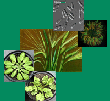| Beck, E; Makeschin, F; Haubrich, F; Richter, M; Bendix, J; Valerezo, C: The Ecosystem (Reserva Biológica San Francisco) In: Gradients in a Tropical Mountain Ecosystem of Ecuador (Beck e., Kottke I., Makeschin F., Mosandl R. eds.) in Beck E., Bendix J, Kottke I, Makeschin F, Mosandl R,: Ecological Studies, Springer Verlag, Ecological Studies 198, 1-13 (2008), doi:10.1007/978-3-540-73526-7_1 | |
| Abstract: The investigated area, termed the “Reserva Biologíca San Francisco” (RBSF) is located in the Cordillera Real, an eastern range of the South Ecuadorian Andes (Fig. 1.1), which is the weather divide between the humid Amazon (“Oriente”) and the dry Inter-Andean region. In southern Ecuador the Andes are not as high as in the central and northern part of the country, but the topography of that area, called the Huancabamba depression, is more complicated. Here, a mountain junction culminates in the “Nudo de Loja” at 3800m a.s.L, from which the Inter-Andean Sierras stretch towards SW, S and SE, all interrupted and dissected by valleys and basins. In spite of its dominance of the south Ecuadorian Andes the Cordillera Real only partly forms the watershed between the Pacific and the Atlantic Ocean. The map (Fig. 1.1) shows the looping course of the Rio Zamora, whose springs are south of Loja on the western slope of that mountain range. But north of Loja it turns eastwards and finally joins the Rio Maranon, a tributary of the Amazon. The valley of the Rio San Francisco, which is the main research area of the study presented here, belongs to the eastern escarpment of the Cordillera Real. Though still accompanied by pre-cordillera ranges, it is in principle exposed towards the Amazon basin. |

